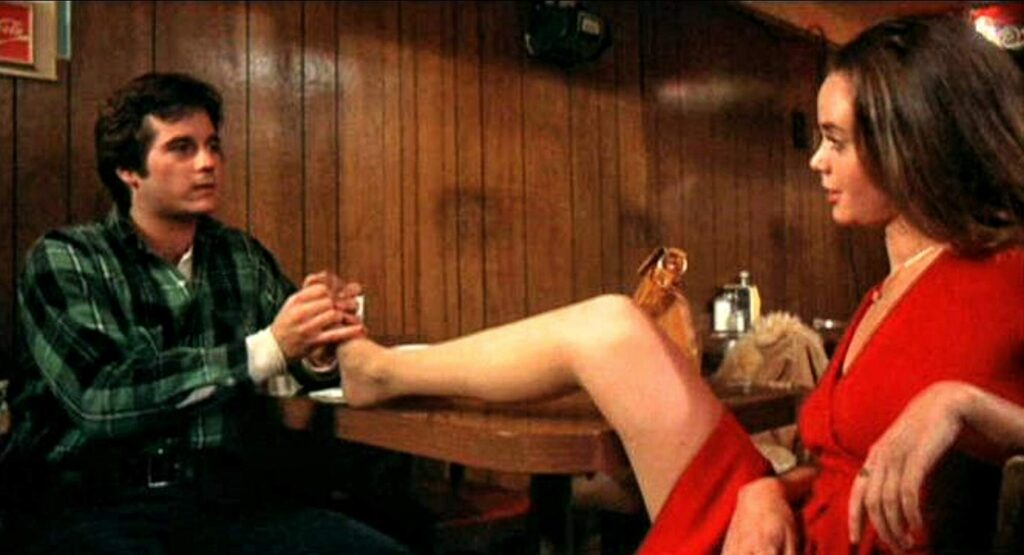
After making The Pom Pom Girls (1976) at Crown International Pictures, Joseph Ruben took his next film, Joyride (1977), to American International. Ruben retained the services of leading man Robert Carradine as well as the loose narrative structure of The Pom Pom Girls. The influence of Hal Ashby and Jerry Schatzberg that helped color the earlier film is even more prominent in Joyride with its meandering narrative asides and languid pacing. Overall Joyride is a tonally more consistent film than The Pom Pom Girls even though that meant Ruben had to give up some of that film’s “slice of life”aesthetic.
Joyride begins with Robert Carradine, his girlfriend Melanie Griffith and their best buddy Desi Arnaz Jr. pulling up stakes and relocating to Alaska where they plan to buy a fishing boat and make a living on America’s last frontier. Motivated by suburban ennui, the trio finds themselves ill prepared and looking for less than ideal work. The first act of Joyride follows the trials and tribulations of the three protagonists as they scratch out a meager living. It is this portion of the film that most resembles the free wheelin’ narrative style of The Pom Pom Girls and is incredibly effective at exploring the different character dynamics as well as establishing many of the specifics of the setting.
The second act of Joyride follows the inevitable crime spree up until the payroll robbery. The narrative structure in this act tightens and a number of the formal genre motifs from films like Bonnie & Clyde (1967) and Gun Crazy (1949) are imported. The third act, when the characters are living on the run from the law, slowly slides back into the more fluid narrative form of the first act. Yet, Joyride never fully commits to creating a stylistic cycle of the narrative. Instead, Ruben presents a different variation on a theme which suggests that no matter how hard the characters try they can never return to that lost innocence.
Like The Pom Pom Girls, Joyride ends with a major unifying event. However, like the earlier film, this event does not bring the various narrative threads to a close. Both films don’t actually end so much as leave the characters where they are at a specific moment in time. In The Pom Pom Girls the dramatic stakes were far less consequential than in Joyride. By ending Joyride this way Ruben leaves things ambiguous. The audience never knows for sure if the heroes of the film got away with their crimes or if they were ever captured by law enforcement. For Ruben such questions are clearly irrelevant.
Ruben’s film isn’t about easy answers, it’s about observation. The audience is invited to live and breathe with characters not so different from themselves. By extension this strategy also invites the viewer to see the machinations of the genre film slowed down and opened up until they are literally deconstructed by the illusion of naturalism à la Robert Altman. Ruben’s exploitation films from the late seventies are a deliberate call back to the arthouse New Hollywood films that closed out the sixties. Figures such as Monte Hellman, Dennis Hopper, and Francis Ford Coppola came to arthouse films via B-movies and Ruben’s films are simply doing the same thing but in reverse.
Joyride is not as pretentious as it may sound. Joseph Ruben, like the aforementioned Jerry Schatzberg, is not a director who signs his name in practically every shot. Ruben puts the story and characters before all else, then he simply unfolds that story in his own unique way. Though he isn’t commonly ranked among the great exploitation film auteurs of the seventies that is exactly what Joseph Ruben is. Joyride, like The Pom Pom Girls, deserves to be reassessed as the classic it actually is.
